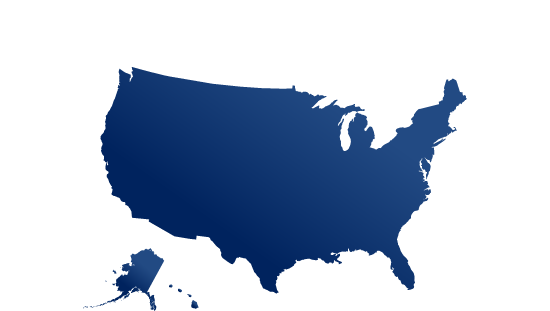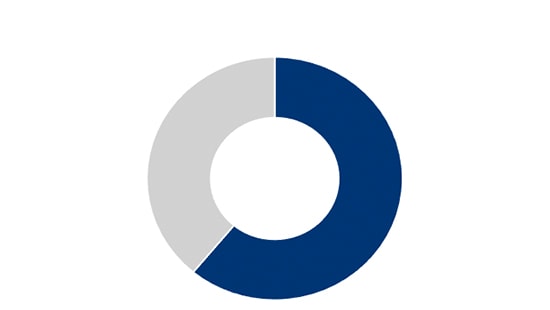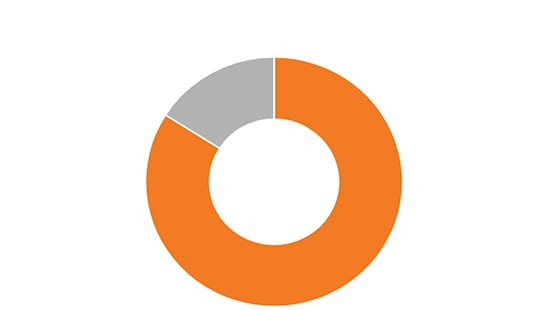Marcamos el estado de la administración del agua en la era de la IA
El mundo está experimentando una mayor demanda en el uso de energía y agua, impulsada principalmente por tecnologías transformadoras como la IA, así como por fenómenos meteorológicos extremos y una economía en evolución.
- Para 2030, se estima que el crecimiento relacionado con la IA exigirá energía adicional equivalente a las necesidades anuales de la India1 y la misma cantidad de agua para satisfacer las necesidades anuales de agua potable de los Estados Unidos2.
- Los centros de datos podrían utilizar más de 1 billones de galones de agua dulce al año para 20273.
- Se proyecta una brecha del 56 % entre el suministro y la demanda de agua dulce para 20304 y se proyecta que la demanda de agua aumente hasta un 30 % para 20505.
Como líder mundial en sustentabilidad, Ecolab está ayudando a resolver estos desafíos del agua. Nuestro estudio de 2025 proporciona información sobre las últimas percepciones y preocupaciones sobre el agua; y ayuda a las empresas, los gobiernos y las organizaciones sin fines de lucro a desarrollar estrategias efectivas sobre el agua. Es esencial comprender la percepción pública para ayudar a fundamentar estas estrategias y avanzar hacia un futuro con seguridad hídrica.
Descubrimientos clave del estudio Watermark de Ecolab de 2025
Agua: el costo oculto y la oportunidad de la IA
Aunque muchos consumidores reconocen el alto consumo de energía de la IA, pocos son conscientes de su importante huella hídrica. Esta falta de conciencia es especialmente notable en Asia Pacífico, IMEA y América Latina.
Percepciones de los consumidores sobre el grado en que cada recurso se utiliza actualmente para respaldar las operaciones de IA:

China
81% Energía
77 % agua

IMEA
78% Energía
61% Agua

América Latina
68% Energía
51% Agua

Asia Pacífico
60% Energía
43% Agua

Europa
59% Energía
46% Agua

Estados Unidos
55% Energía
46% Agua
Los datos ilustran los porcentajes de acuerdo:
Las empresas deben aprovechar la IA
para un uso responsable de los recursos naturales
Confianza en las empresas para gestionar las demandas de energía de las operaciones de IA de manera responsable

IMEA
2026
76%
63%

China
2026
72%
77%

América Latina
70%
49%

Europa
2026
54%
37%

Asia Pacífico
51%
37%

Estados Unidos
49%
39%

Administración inteligente del agua: los consumidores quieren que las empresas reutilicen el agua de forma inteligente
A pesar de la creencia generalizada de los consumidores de que las empresas deben priorizar la gestión inteligente del agua para abordar la escasez del agua, son menos las personas que sienten que estas empresas están poniendo en práctica con éxito soluciones de reutilización del agua.
Porcentaje de consumidores que creen que las empresas están reduciendo, reutilizando, reciclando, restaurando y recuperando agua en todas sus operaciones diarias.

Estados Unidos
43%

Europa
44%

América Latina
48%

Asia Pacífico
48%

IMEA
67%

China
74%
Existe un consenso generalizado entre los consumidores de todo el mundo:
Las empresas deben priorizar las inversiones en tecnologías e infraestructura para reforzar la resiliencia de los recursos hídricos.
para proteger los recursos hídricos del cambio climático:

América Latina
84%
85%

IMEA
2026
82%
82%

China
2026
77%
76%

Europa
2026
72%
71%

Asia Pacífico
71%
70%

Estados Unidos
68%
67%
Las empresas que demuestren prácticas de agua responsables pueden esperar un gran interés por parte de los consumidores.
Porcentaje de consumidores dispuestos a
buscar activamente más información
de estas compañías:

América Latina
82%

IMEA
2026
78%

China
2026
68%

Asia Pacífico
61%

Europa
2026
61%

Estados Unidos
61%
Asociaciones de agua
Ninguna entidad puede enfrentar los desafíos del agua por sí sola. Al forjar asociaciones sólidas, las empresas, los gobiernos y las comunidades pueden acelerar la acción coordinada para encontrar soluciones y construir un futuro con una mayor conservación del agua para todos.
En la mayoría de las regiones, los consumidores tienen empresas (incluidos los fabricantes) y los gobiernos la misma responsabilidad por la conservación del agua. Sin embargo, ambos aún enfrentan críticas por no contribuir lo suficiente en comparación con los individuos, las organizaciones sin fines de lucro y las organizaciones conservacionistas.
Los datos a continuación detallan las percepciones de los consumidores sobre cuánto ha hecho cada entidad hasta la fecha para conservar el agua en su país:

América Latina
42% Negocios
55% Individuos
48% Gobierno
60% Organizaciones sin fines de lucro

Europa
2026
45% Negocios
56% Individuos
45% Gobierno
54% Organizaciones sin fines de lucro

Estados Unidos
47% Negocios
58% Individuos
48% Gobierno
56% Organizaciones sin fines de lucro

Asia Pacífico
2026
48% Negocios
49% Individuos
46% Gobierno
50% Organizaciones sin fines de lucro

IMEA
2026
63% Negocios
69% Individuos
79% Gobierno
67% Organizaciones sin fines de lucro

China
2026
80% Negocios
79% Individuos
84% Gobierno
79% Organizaciones sin fines de lucro
A pesar de los desafíos del agua a nivel mundial, los consumidores muestran un gran optimismo sobre nuestra capacidad para enfrentarlos.
Una rotunda mayoría, más del 60% de los consumidores de todas las regiones, cree que la escasez de agua
se puede abordar de manera efectiva.
Hasta qué punto los consumidores
están de acuerdo en que la escasez de agua
se puede abordar de manera efectiva:

América Latina
84%

IMEA
2026
83%

China
2026
73%

Estados Unidos
67%

Europa
2026
66%

Asia Pacífico
61%
Eventos de clima extremo
Los consumidores perciben que los cambios en el clima y el aumento de los desastres naturales exacerban el estrés hídrico,
lo que genera desafíos tanto en la disponibilidad como en la calidad del agua.
Porcentaje de consumidores que relacionan el cambio climático con el empeoramiento del estrés hídrico:

IMEA
2026
81%

China
2026
80%

América Latina
79%

Asia Pacífico
2026
69%

Europa
2026
69%

Estados Unidos
65%
Los consumidores exigen claramente que se tomen medidas contra el cambio climático, lo que genera una gran expectativa
en el liderazgo corporativo y gubernamental.
Porcentajes de consumidores que consideran
muy importante que los gobiernos y las empresas prioricen los esfuerzos para disminuir
el impacto del cambio climático:

América Latina
87%
88%

IMEA
2026
81%
81%

China
2026
76%
77%

Europa
2026
71%
71%

Asia Pacífico
70%
69%

Estados Unidos
67%
67%
Tendencias anuales notables
Dado que el acceso al agua limpia y segura sigue siendo un problema mundial crítico, los niveles de preocupación de los consumidores son notables.
Qué tan preocupados están los consumidores por el agua limpia y segura, desglosado por región:

China
2026
96%

América Latina
92%

Estados Unidos

Europa
2026
69%

IMEA
2026
67%

Asia Pacífico
2026
63%
Los consumidores de la mayoría de las regiones identifican sistemáticamente los sectores de agricultura y
manufactura de alimentos y bebidas como la industria más responsable del uso del agua.
Agrícola
Alimentos y bebidas

IMEA
2026
52%
37%

América Latina
48%
44%

Asia Pacífico
47%
36%

Europa
2026
47%
33%

Estados Unidos
43%
31%

China
2026
29%
28%
Impulsando la administración del agua
Durante más de 100 años, Ecolab ha trabajado para proteger los recursos vitales para la vida al priorizar la administración del agua en nuestras propias operaciones y las de nuestros clientes. En más de 40 industrias en todo el mundo, Ecolab ayuda a las empresas a responder a los desafíos hídricos y clímaticos al minimizar su uso de agua en procesos críticos. Ayudamos a nuestros clientes a generar un impacto duradero y lograr un retorno exponencial de la inversión (eROI) alineando los objetivos climáticos, hídricos y de crecimiento empresarial.
Nuestras soluciones
Con más de un billón de galones de agua gestionados anualmente, Ecolab combina Connected Chemistry™
con conocimientos digitales y experiencia en la industria para impulsar la sustentibilidad y el crecimiento en conjunto.
Obtenga más información sobre cómo Ecolab puede ayudarle a adoptar un enfoque de gestión inteligente del agua en sus operaciones.

Identifique oportunidades con el Smart Water Navigator

Adopte un enfoque empresarial con Ecolab Water for Climate™

Gestione el rendimiento del agua con la tecnología 3D TRASAR™

Vea información valiosa con los servicios digitales de ECOLAB3D™
Nuestros proyectos
Cuando se aborda la resistencia al agua, las empresas pueden prosperar. Los siguientes estudios de caso destacan cómo Ecolab ayuda a generar un impacto positivo en los objetivos comerciales, hídricos y climáticos de nuestros clientes:
Nuestras asociaciones
Nuestras asociaciones con organizaciones no gubernamentales (ONG) líderes refuerzan nuestra compresión de los desafíos globales que enfrentan nuestras operaciones, clientes y comunidades, y nuestra capacidad para tener un impacto sobre estos. Incluyen:
- Bloomberg Law, "AI Computing on Pace to Consume More Energy Than India, Arm Says", abril de 2024: news.bloomberglaw.com/artificial-intelligence/ai-computing-on-pace-to-consume-more-energy-than-india-arm-says↵
- Análisis de datos de Ecolab de Lei, N., & Masanet, E. (2022) y Goldman Sachs (2024)↵
- Making AI Less “Thirsty”: Uncovering and Addressing the Secret Water Footprint of AI Models: www.goldmansachs.com/insights/articles/AI-poised-to-drive-160-increase-in-power-demand and TIME, “How AI Is Fueling a Boom in Data Centers and Energy Demand”: time.com/6987773/ai-data-centers-energy-usage-climate-change/↵
- World Resource Institute: “Setting Enterprise Targets: Modeling Downstream Water Use and Consumption”: Setting Enterprise Targets: Modeling Downstream Water Use and Consumption | World Resource Institute↵
- World Resource Institute, “Securing Freshwater for All”: www.wri.org/freshwater↵


